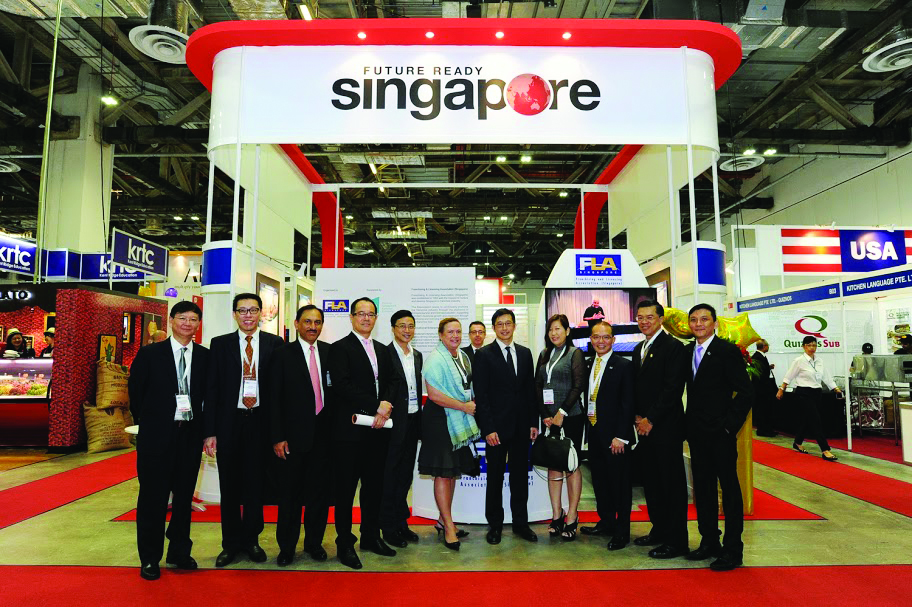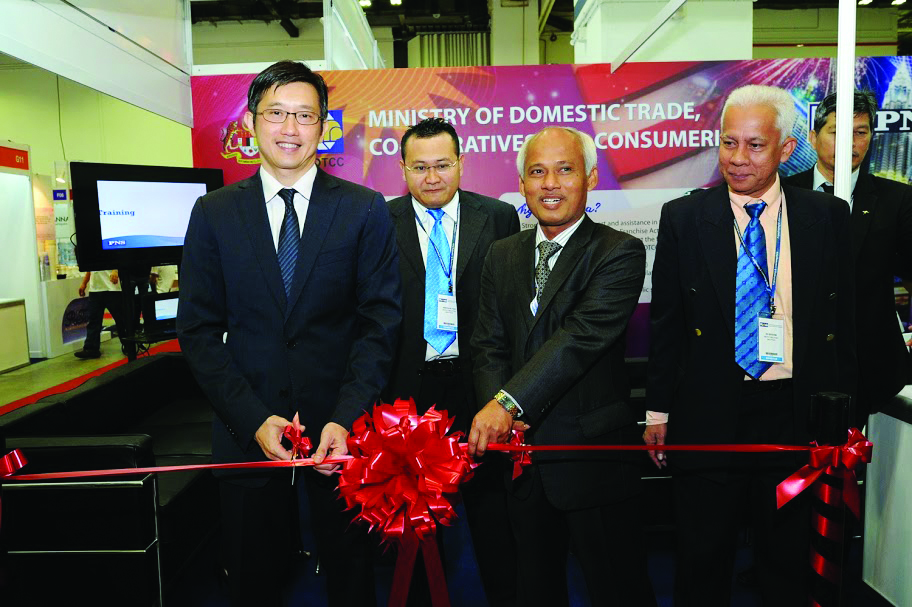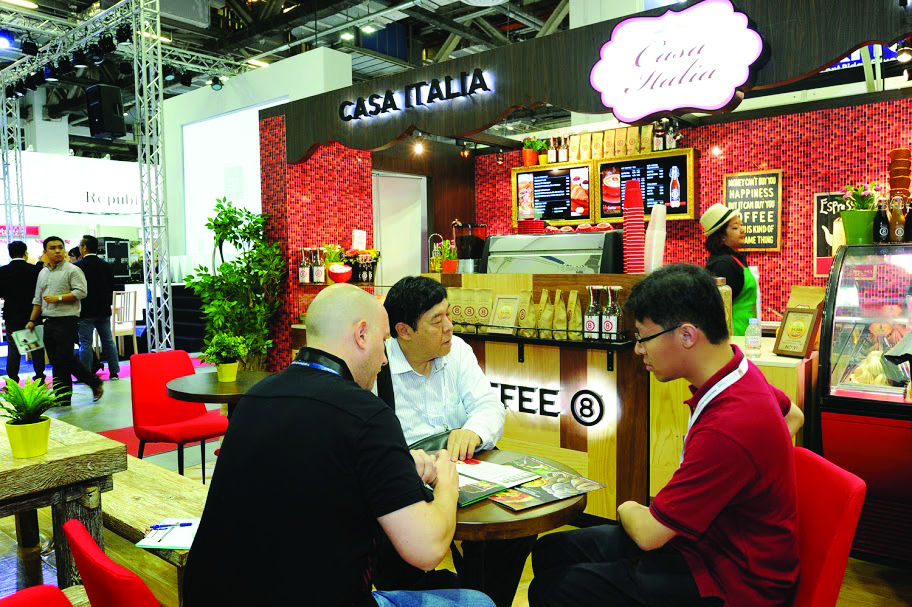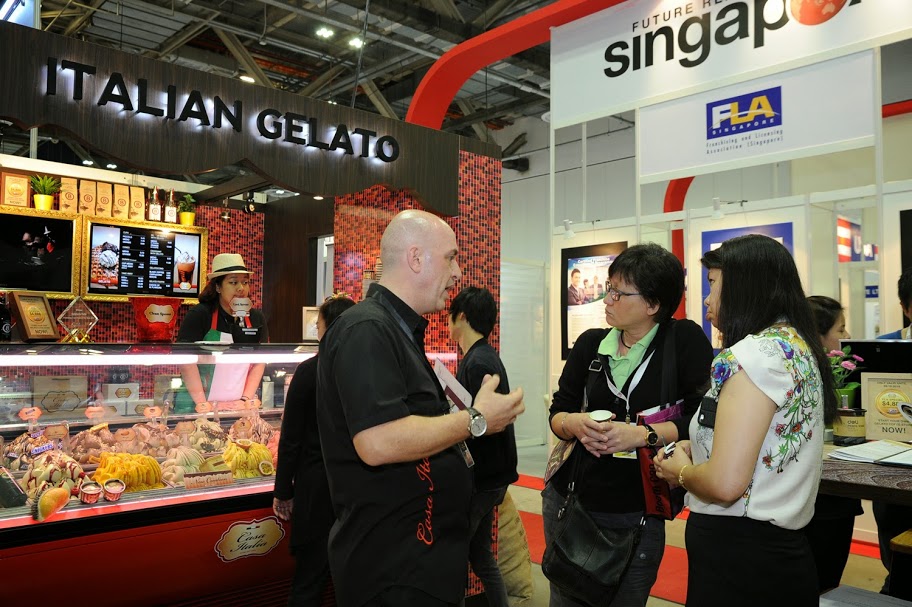FLA2015 is just around the corner and helping to direct the future of Singapore Franchise and Licensing Industry is none other than Mr Jean-Jacques Lavigne, the Executive Director of the Franchising and Licensing Association Singapore. Franchise Asia finds out more on what to expect at FLA2015 and beyond.
What can we expect at FLAsia 2015?
This year, the main highlights of FLAsia are the Japan, Taiwan and USA pavilions, a new business advisory zone and as usual, a high quality Malaysian pavilion. Of course on top of that, there is a huge Singapore Pavilion gathering dozens of brands already operating from and in Singapore. There are a broad array of very exciting brands and concepts that are worth discovering or re-discovering.
There is also the promise of a pizza battle between Gourmet Pizza to Go and Pezzo. Since they are exhibiting on two different sides of the pavilion, we can expect some collateral damage. On the coffee front, Owl Café is now coming up with its franchise programme alongside their retail services and will be fighting for coffee aficionados’ attention against Setacafe.com, Coffee Hive or broader concepts such as Casa Italia.
Visitors looking for a great franchise business in sweets will have plenty to choose from between I Crepe, Chewy Junior and MilkCow, which is another brand brought to the market by Bideas. Then of course, Singapore education brands are always present and offer good opportunities for astute investors. We also have exciting upcoming lifestyle brands like Bynd at one end of the spectrum and Citylong at the other.
Altogether, the show’s progress is in line with our expectations and visitors will have an opportunity to learn about a broader licensing component.
China and South East Asia are facing slower economic growth. Do you see this economic scenario affecting the franchising industry in Singapore?
Objectively, no. People are still consuming and consumers are getting more sophisticated and discerning. As for investors and entrepreneurs, if a business slows down or shuts down, another will rise up to fill the gap. So, franchising, licensing and FLAsia are for people who don’t sit on their hands and always pushing the envelope.
What are some of the emerging trends of SEA franchise that you’re observing?
Clearly the perception that franchise mostly apply to F&B is a becoming more and more of a cliché as the franchise model is also used in logistics and other B2B sectors. Of course, B2B business tends to be done in more vertical B2B tradeshows than in horizontal franchise & license shows.
But, this is probably an interesting trend. We observe more and more cross-breed B2B businesses reaching out to consumers through a new franchise division and more B2C businesses doing it the other way around. Through mobile technology and quick information flow, we are witnessing a rapid de-structuring of classic business models in exchange for models that are more fluid and adaptive. SEA could actually be at the cutting edge of such mutation.
The ASEAN Economic Community (AEC) is to be established by 2015 to promote free trade and business in the region. How will this support the franchising industry in Singapore and the region?
In response to the first part of your question, it is really a matter of opinion. On the ground, so far, one cannot say that anything is very visible yet. As for franchising specifically, without unified regulations across the countries of the zone, that will always require a bit more hard work and investment to get things done. Singapore is privileged not to require specific franchise laws because it suits our foundations and aspirations. So far, it has worked for us but may not work for other countries.
To answer to the second part of the question, yes, quite obviously it should make it easier to do business via franchising. The key question is who is going to give in: the lesser regulated country or the more regulated one. This is not an easy question and as far as we are concerned, we believe that simplicity is what works best for us.
In your view is Singapore an attractive franchising market for international players? And how successful are Singapore companies in exporting franchise?
Quite naturally, bigger brands are from overseas and decide to set up shop in Singapore because it is a market necessity. Some big brands may decide to bypass Singapore simply because the business is not doable in Singapore. A RV retail franchise in Singapore would probably find it tough going. But if the business is quite sophisticated and if the region at large is the target, there is no doubt that Singapore offers a very good operating platform to work from a market, legal, logistics and skills point of view. Then we have a myriad of much smaller locally bred brands that are now venturing aboard.
Without a doubt, several of them can be very well established players regionally if not globally, in the next 10 years. And our job is to ensure that they get there. However, we also need to be there for all the mushrooming brands to make sure that those with real potential hurdle the first few obstacles in their way while continuing to offer an ecosystem and environment for plethora of brands and businesses to thrive within Singapore. If we do that as an association and by extension as a nation, then we would have achieved what we set out to do.
What are your plans for FLA Singapore in 2016?
The direction for FLA in 2016 is very clear. Internally, the focus will be on addressing the needs of our latest members. FLA Member base grew 50% this year and it is imperative to provide the new members with the tools and support they need. We are also making preparations in anticipation of our growing membership base and looking into ways to provide more value to our members.
Our external priority is strengthening the international presence of our members. We will take them to overseas tradeshows, organise business matching missions in various countries and also provide more tools to facilitate follow-up and business development. 2016 is really about growth!











